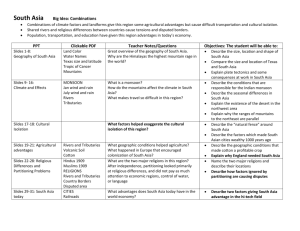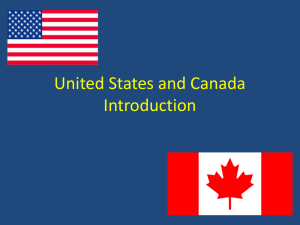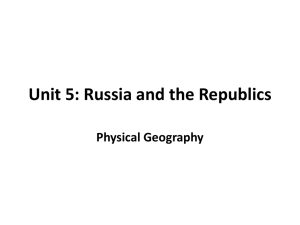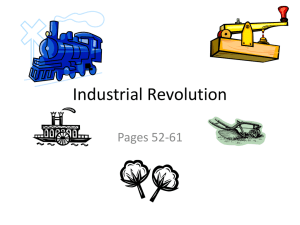Main Ideas
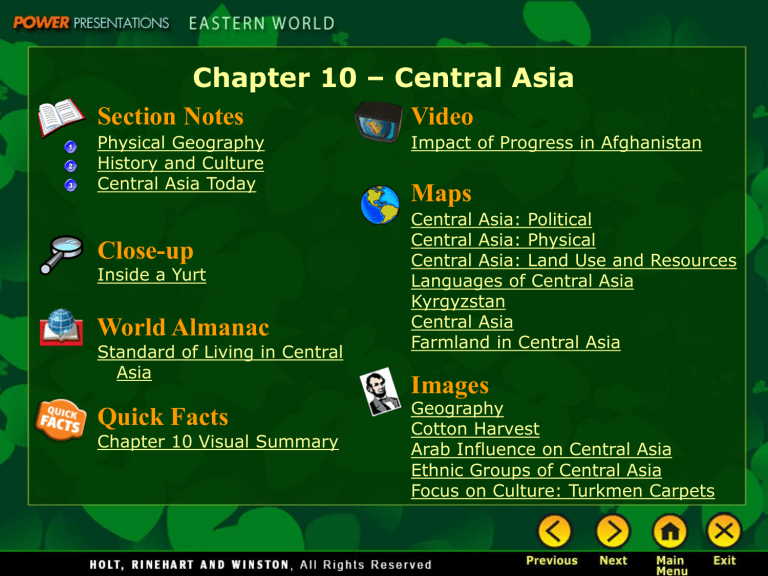
Chapter 10 – Central Asia
Section Notes
Video
Impact of Progress in Afghanistan
Close-up
World Almanac
Maps
Central Asia: Land Use and Resources
Quick Facts
Images
Arab Influence on Central Asia
Focus on Culture: Turkmen Carpets
Physical Geography
The Big Idea
Central Asia, a dry, rugged, landlocked region, has oil and other valuable mineral resources.
Main Ideas
• Key physical features of landlocked Central Asia include rugged mountains.
• Central Asia has a harsh, dry climate that makes it difficult for vegetation to grow.
• Key natural resources in Central Asia include water, oil and gas, and minerals.
Main Idea 1:
Key physical features of landlocked Central
Asia include rugged mountains.
• All of the countries in this region are landlocked, or completely surrounded by land with no direct access to the ocean.
Mountains
• Many high mountain ranges through
Afghanistan,
Tajikistan, and
Kyrgyzstan
• Large glaciers in high mountains such as the Pamirs
• The mountains have contributed to the region’s isolation.
• Frequent earthquakes
• From mountains in east, the land gradually slopes westward.
• The central part of the region is covered with plains and low plateaus.
• The plains region is the site of the fertile
Fergana Valley, a major center of farming in the region for thousands of years.
• Two rivers, the Syr
Darya and the Amu
Darya, flow through the Fergana Valley from eastern mountains into the
Aral Sea, which is really a large lake.
• Another important lake, Lake
Balkhash, has freshwater at one end and salty water at the other end.
Main Idea 2:
Central Asia has a harsh, dry climate that makes it difficult for vegetation to grow.
High peaks in the eastern mountain area are too cold, dry, and windy for vegetation.
Two deserts— the Kara-Kum and the Kyzyl
Kum—have extremely high temperatures.
Temperature ranges are not so extreme in the north and rainfall is heavy enough for plants to grow.
Main Idea 3:
Key natural resources in Central Asia include water, oil and gas, and minerals.
• Main water sources are the Syr Darya and Amu Darya rivers.
• Conflict between Uzbekistan and Turkmenistan over how to use the water from the rivers
• River water used mostly to irrigate cotton fields
• So much water from the rivers is used for irrigation that almost no water reaches the Aral Sea today.
• Central Asia’s rivers also supply power.
• Large dams on the rivers generate hydroelectricity.
Oil and Other Resources
Oil
• Uzbekistan, Kazakhstan, and Turkmenistan have huge reserves of oil and natural gas.
• Reserves must be exported to benefit the countries.
• With no ocean port, oil and gas must be transported through pipelines.
• Building and maintaining pipelines is difficult through the rugged terrain.
Other Resources
• Other minerals are also present.
• Kazakhstan has many mineral mines.
• Gold, silver, copper, zinc, uranium, and lead
• Also large amounts of coal
History and Culture
The Big Idea
The countries of Central Asia share similar histories and traditions, but particular ethnic groups give each country a unique culture.
Main Ideas
• Throughout history, many different groups have conquered Central Asia.
• Many different ethnic groups and their traditions influence culture in Central Asia.
Main Idea 1:
Throughout history, many different groups have conquered Central Asia.
Trade
• Beginning in about 100 BC the best trade route between
Europe and China ran through Central Asia and was called the Silk Road.
• Cities along the road, such as
Samarqand and Bukhara, grew rich from the trade.
• By 1500 Europeans were sailing to East Asia through the Indian Ocean, and trade through Central Asia declined.
Invasions
• Interest in the trade route sparked many invasions, among the first were Turkicspeaking nomads from northern Asia in AD 500.
• Arab armies took over much of the region in the 700s and ruled until the 1200s.
• Mongol armies conquered
Central Asia in the 1200s, followed later by various tribes, such as the Uzbeks,
Kazakhs, and Turkmens.
Russian and Soviet Rule
• The Russians conquered Central Asia in the mid-1800s.
– Built railroads
– Expanded cotton and oil production
– Rule came to be resented
• After the Russian Revolution in 1917 the new Soviet leaders weakened resistance to their rule by dividing
Central Asia into republics.
– They encouraged ethnic Russians to move to these areas and made other people settle on government-owned farms.
• The Soviet Union collapsed in 1991. The Central Asian republics finally became independent countries.
Main Idea 2:
Many different ethnic groups and their traditions influence culture in Central Asia.
• For centuries Central Asians have made a living by raising horses, cattle, sheep, and goats.
• Many herders live as nomads, people who move often from place to place.
• Unique homes, called yurts, make moving with the herds possible. A yurt is a movable round house made of wool felt mats hung over a wood frame.
People, Languages, and Religion
People
• Several ethnic groups (all part of larger ethnic group,
Turkic), including:
– Kazakh
– Kyrgyz
– Turkmen
– Uzbek
– Russian
Languages
• Each ethnic group speaks its own language.
• In most countries, more than one language is spoken.
• When the Russians conquered the region, they established Russian as the official language.
• They also introduced the
Cyrillic alphabet, but most countries now use the Latin alphabet.
Religion
• Traders and conquerors brought their religious beliefs to the region.
• Islam is the main religion in Central
Asia.
• Most of the region’s
Christians attend the Russian
Orthodox Church.
Central Asia Today
The Big Idea
Central Asian countries are mostly poor, but they are working to create stable governments and sound economies.
Main Ideas
• The countries of Central Asia are working to develop their economies and to improve political stability in the region.
• The countries of Central Asia face issues and challenges related to the environment, the economy, and politics.
Main Idea 1:The countries of Central Asia are working to develop their economies and to improve political stability in the region.
Afghanistan
• Long war with the Soviet
Union in the 1980s
• Taliban used strict interpretation of Islamic teachings to rule country.
• In the mid-1990s a radical Muslim group, the
Taliban, took over most of the country, including the capital, Kabul.
• Women’s role was limited; had to wear veils, stop working, music and dancing banned
• After 9/11, U.S. and British forces attacked Taliban and al
Qaeda targets and toppled the
Taliban government.
• There are opposing groups that want control which are causing stability issues for the government
• The new government has a new constitution, new voting regulations, and a new national assembly that includes women.
Kazakhstan and Kyrgyzstan
Kazakhstan
• Strong Russian influence; it was the first Central Asian country to be conquered.
• The economy was tied to the Soviet Union and suffered when it collapsed.
• Growing economy based on oil reserves and quick adaptation to the free market (being able to buy and sell goods at any cost)
• Stable democratic republic with an elected president and parliament
Kyrgyzstan
• Clan membership and nomadic traditions are important.
• Mix of irrigated crops and dryland farming, or farming that relies on rainfall instead of irrigation, is most important industry.
Tourism may help improve the economy.
• Low standard of living, signs of strengthening economy
• Fairly stable government
Tajikistan, Turkmenistan, Uzbekistan
Tajikistan
• After years of conflict between Communist and Reform groups the nation is now a republic with an elected president
• Following years of civil war industrial/ agricultural production declined.
• Relies on cotton farming; only 5-6 percent of country’s land is arable, or suitable for growing crops
Turkmenistan
• Parliament with president for life who holds all the power
• He has named a month for himself, and his face appears everywhere.
• Supports Islam, but not as political movement (not to be the govt)
• Economy based on oil, gas, and cotton
Uzbekistan
• President who holds all the power and has been criticized for lack of freedom and human rights.
• Government closely controls the economy.
• Economy based on oil, gold, and cotton
Main Idea 2:
The countries of Central Asia face issues and challenges related to the environment, the economy, and politics.
Environmental
Challenges
• Shrinking of the
Aral Sea, with dust storms and impact on the fishing industry
• Radiation left over from
Soviet nuclear bomb testing
• Overuse of chemicals in crop production
Economic
Challenges
• Reliance on one crop, cotton
Political
Challenges
• Lack of political stability
• Focus on cotton has not encouraged development of manufacturing industries.
• Oil and gas development slowed by outdated tools, lack of funds, poor transport
• Often faced with terrorist threats from different political groups within their own countries
Click on the window to start video
